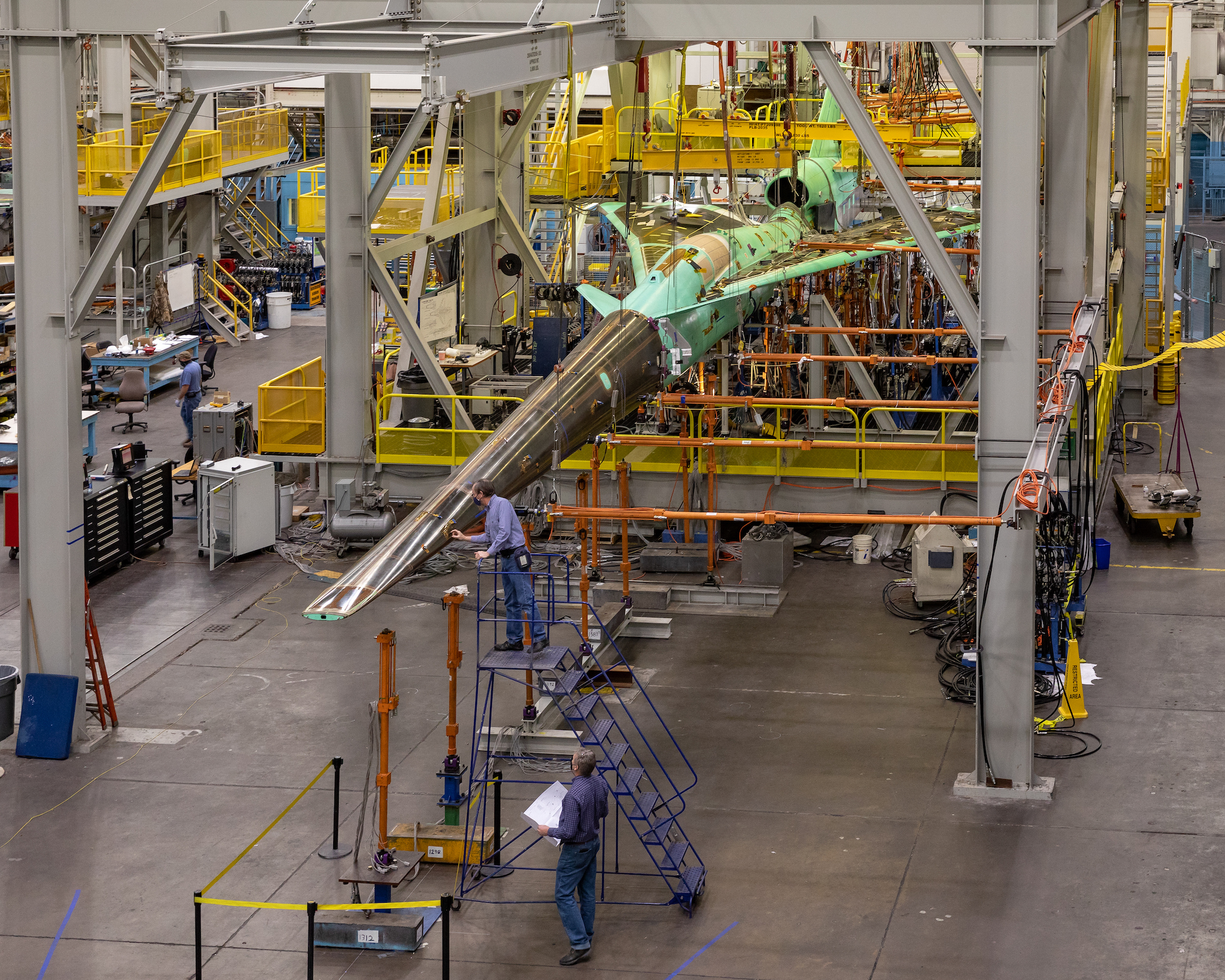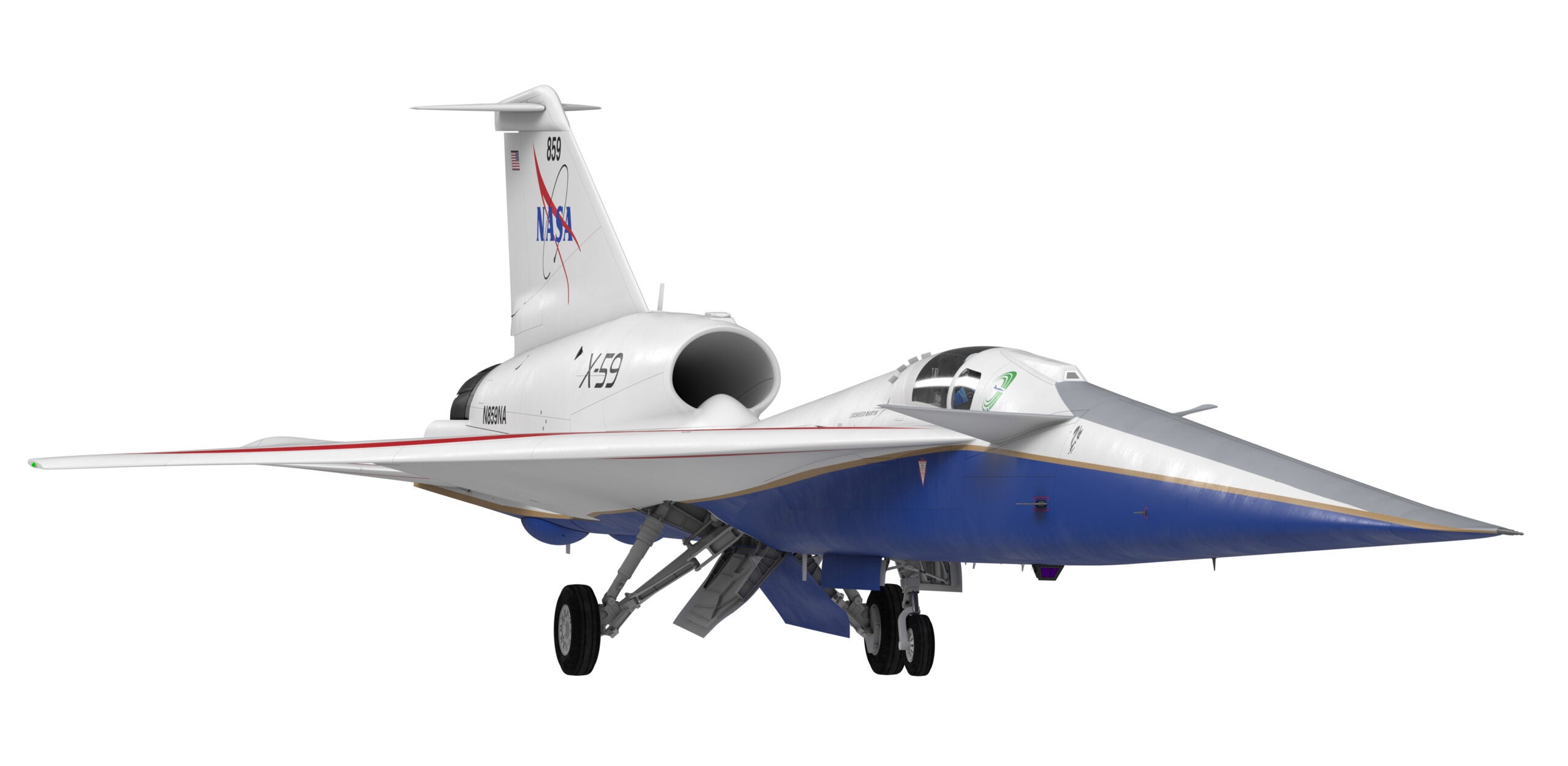
Earlier this year, NASA announced that it would be working with Boeing to create an aircraft with a dramatic new look, and it could be strutting down a runway in about five years. Called the Sustainable Flight Demonstrator, it has long, thin wings that are supported by trusses to give them the stability they need. Between those wings and other efficiency tweaks, the plane could be 30 percent more fuel efficient than similar-sized aircraft today, like the single-aisle Boeing 737 or Airbus A320, according to the aeronautics and space agency.
This week, NASA said that the aircraft, which doesn’t yet exist, has received an X-plane designation from the Department of Defense. It’s now officially the X-66A, meaning that it’s an experimental research aircraft. NASA already has two ongoing X-plane programs, so the X-66A makes three of them. Here’s what to know about all three.

The X-66A aircraft aims for fuel efficiency
The purpose of the Sustainable Flight Demonstrator is baked into its name: to be as sustainable as it can be. While no aircraft that burns traditional fossil fuel can truly be thought of as sustainable, the goal is to make it as efficient as possible with the fuel it does consume.
The aircraft will be the result of a collaboration between NASA and Boeing, and the agency stresses that one of the reasons they sought the X-plane designation from the Pentagon was to make the plane’s purpose apparent.
“We really wanted to make sure it was clear that this is a research airplane,” says Brent Cobleigh, the program manager for the Sustainable Flight Demonstrator at NASA’s Armstrong Flight Research Center. “We’re really trying to learn with this airplane—it’s not a prototype, it’s not a production airplane.”
Another reason for getting the X-name is to reflect the fact that the entire design of the aircraft is something new, as opposed to NASA testing out a smaller new technology on an existing aircraft design.
“There’s a long history that goes along with the X-plane designation,” Cobleigh reflects. Projects that have carried that label have been “some of the most interesting and innovative airplane designs.” Take a look at a list of NASA X-planes here.
NASA had to apply to the Pentagon to receive that X label. The letters that are found in aircraft names imply something about that aircraft—the F in F-16 stands for fighter, and the B in B-21 is for bomber, and in this case, the X says something too. “It’s a research airplane,” Cobleigh says. “That’s what the X means.”
The plane’s most noticeable feature is its long, skinny trussed-braced wings, which are designed to create less drag as they move through the air while giving the plane the lift it needs to fly. That efficiency boost happens because a long wing can help mitigate the vortices you might sometimes notice forming at a plane’s wingtips. Those are “almost like a tornado coming off the wingtips—that’s a lot of energy created that doesn’t really do us much benefit,” Cobleigh says. The X-66A’s wings could weaken those.
Another way it could be more fuel efficient comes from the engines. Because the wing on the X-66A will be higher off the ground than the wing on a plane like a 737, that means it could employ larger engines that don’t risk bumping their bottoms on the runway or inhaling debris. Colloquially known as jet engines, turbofan engines are at their most efficient when they can be large, so that they can have a high bypass ratio—when a great deal more air bypasses its core than goes through it. Or the fan that propels the air could possibly have no covering on it at all.
The goal is to have the plane first fly in 2028, but it also makes sense to expect delays in programs like these.

The X-59 aircraft aims for quieter supersonic flight
If the X-66A’s first flight is at least five years away, the NASA X-plane most likely to fly this year is called the X-59. That plane, which NASA is creating with Lockheed Martin, exists to test a hypothesis: If an aircraft is designed the right way, could it fly faster than the speed of sound but do so quietly enough to not bother people below?
Supersonic flight by civilian aircraft is not allowed over the United States because of the boom issue. Ideally, the X-59 could demonstrate that it’s possible for an aircraft to slice through the air faster than the speed of sound, but not create the powerful shock waves that lead to people hearing boom sounds. Here’s more on why supersonic flight creates sonic booms, and how the X-59 could change that.

A NASA spokesperson notes via email that the goal is still to get this bird airborne this year: “We are still targeting 2023 for the X-59’s first flight, and we’ll have a better idea of a date once we have completed some critical testing. We are currently gearing up for weight on wheels next and then moving to the flight line and planning to start ground vibration tests and structural coupling tests.”

The X-57 aircraft aims for electric flight
The cleanest way for an aircraft to fly would be for it to produce no direct emissions whatsoever, and an electric plane can accomplish that. That is NASA’s target with the X-57. But batteries are heavy, and they are not as energy dense as fossil fuels are, meaning that an electric aircraft won’t have anywhere near the range their fuel-burning cousins have. The challenges of this new type of flight haven’t stopped companies from getting experimental electric flying machines airborne, though, with Beta Technologies repeatedly flying an electric aircraft, Joby Aviation doing the same and teaming up with Delta Air Lines, and Eviation flying the Alice aircraft for the first time last year, to name only three examples. (Another approach is to use hydrogen.)
But the X-57 Maxwell, NASA’s electric aircraft, has had technical issues to cope with. The agency had originally wanted for the plane to undergo several different design phases, or modifications, but now plans for it just have a simple design: one propeller, powered by electricity, on each wing.
While the plan had held for NASA to get the plane in the sky in that configuration this year, a NASA spokesperson cast a shadow of doubt on that timeline in an email to PopSci: “We are working to overcome technical challenges associated with flight tests for this aircraft and are currently evaluating our schedule and budget to determine when first flight would occur. In the meantime, the X-57 project continues to produce knowledge that benefits the aviation industry, researchers, and regulators.”
The post NASA’s ‘airliner of the future’ is now officially an X-plane appeared first on Popular Science.
Articles may contain affiliate links which enable us to share in the revenue of any purchases made.
from | Popular Science https://ift.tt/CYUqhR6




0 Comments